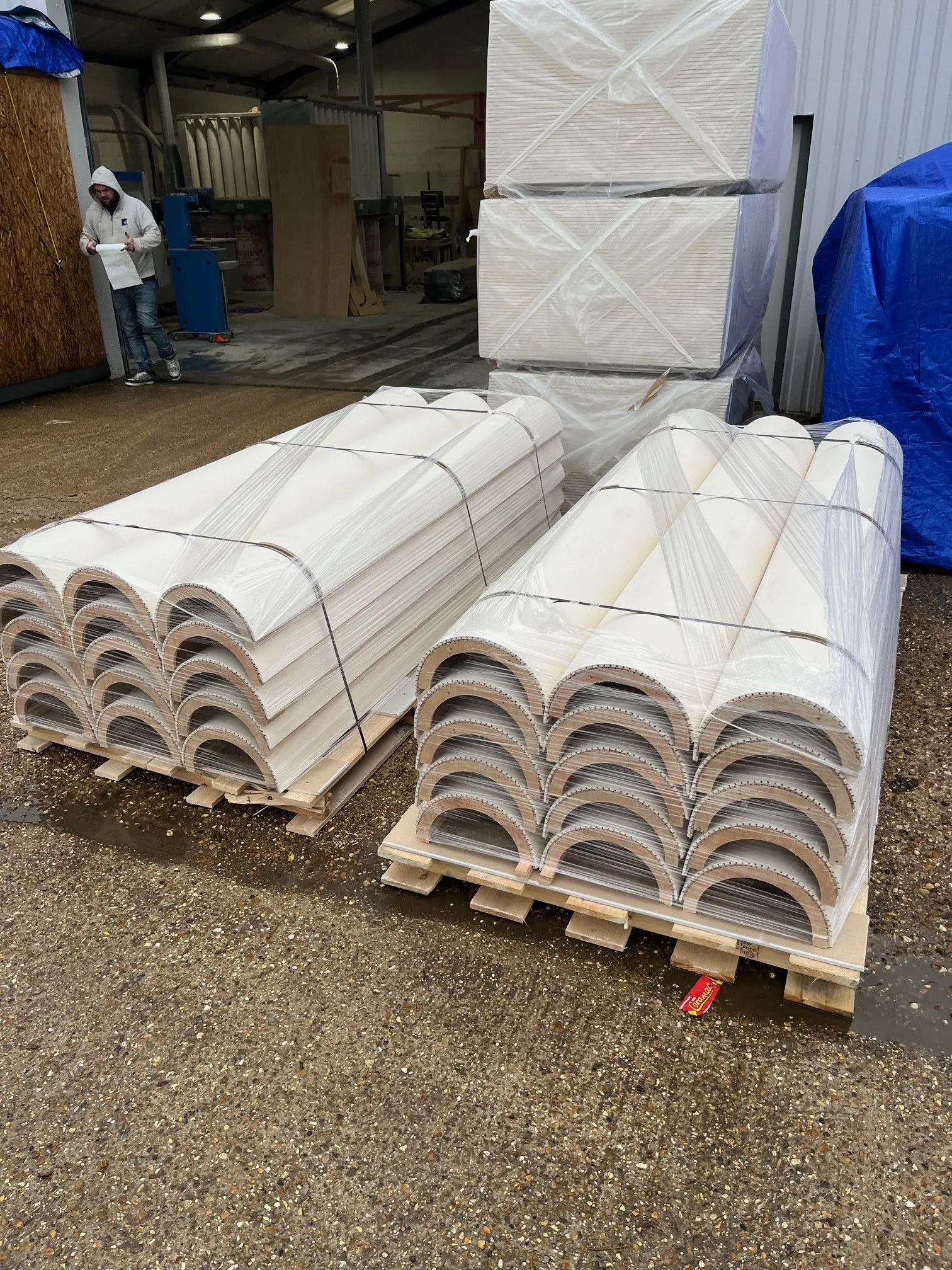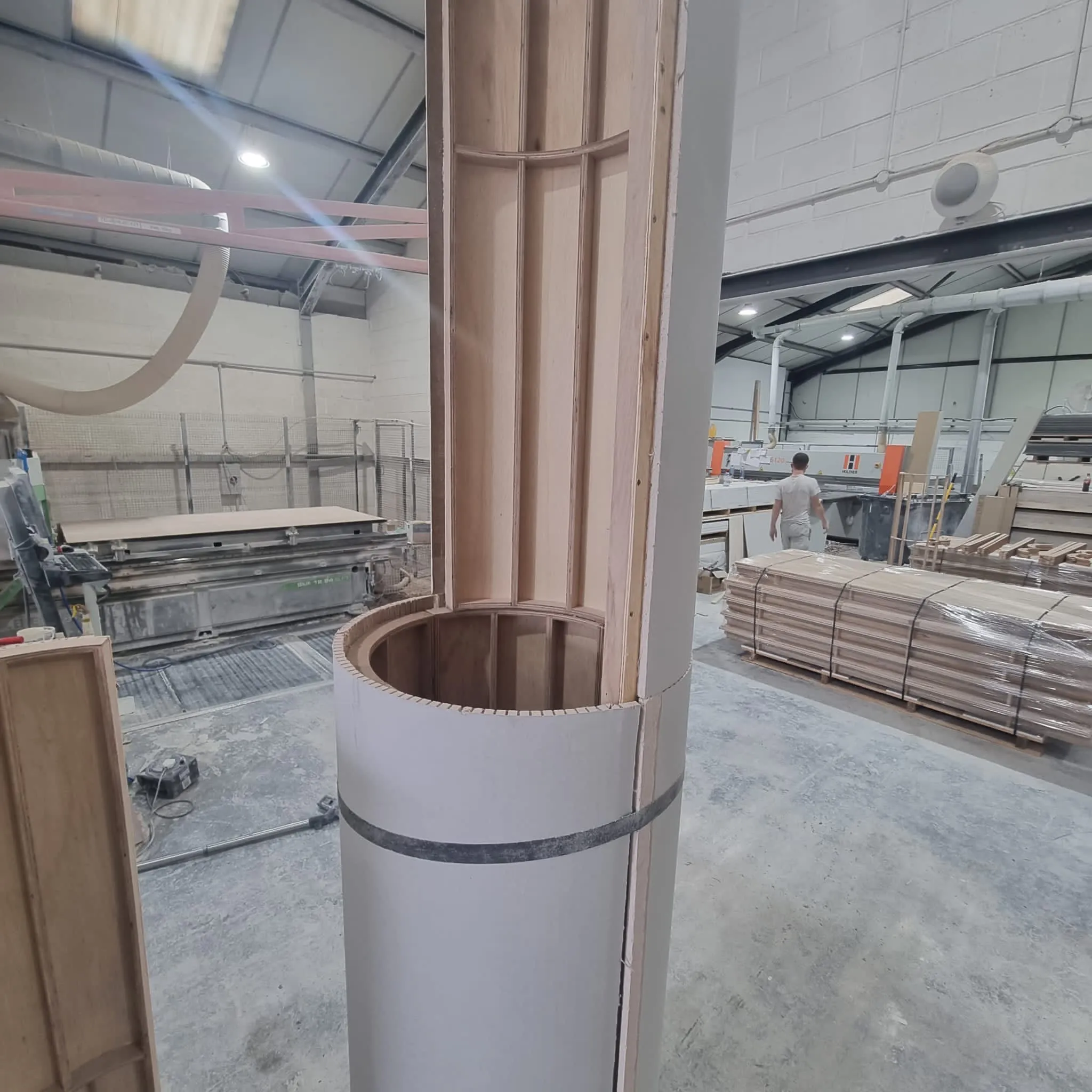Column encasements are a vital component in modern architecture. They enhance both the appearance and protection of structural columns. These encasements are versatile, offering solutions for various design and functional needs.
Made from materials like plasterboard, wood, metal, and composites, they provide a seamless finish. This finish can match any building’s interior or exterior design. Column encasements are not just about aesthetics; they also offer significant protection.
They shield columns from environmental factors such as moisture and temperature changes. This protection is crucial for maintaining the longevity of structural elements. Additionally, they can improve fire resistance and contribute to energy efficiency.
Whether in residential or commercial settings, column encasements are a smart choice. They offer quick and easy installation, making them ideal for new builds and renovations alike.
What Are Column Encasements?
Column encasements are architectural features that cover structural columns. They serve both decorative and protective purposes. By concealing columns, they enhance the overall aesthetics of a building.
These encasements come in various shapes and sizes. They fit the dimensions and styles of different columns, allowing for customisation that suits any architectural design.
A primary function of column encasements is to provide protection. They shield the structural elements from moisture, temperature fluctuations, and other environmental threats, extending the life of the columns they encase.
Key aspects of column encasements include:
- Decorative enhancement
- Protection from environmental factors
- Customisation options
- Compatibility with various materials
By combining form and function, column encasements transform ordinary structures. They create a unified appearance and enhance the structural integrity of buildings.
Key Benefits of Column Encasements
Column encasements offer several valuable benefits that enhance both aesthetics and functionality. They improve the appearance of buildings by hiding unsightly structures, creating a polished and uniform look.
An essential advantage is column protection. Encasements shield structural columns from damaging elements like water and extreme temperatures, helping to prevent corrosion and decay over time.
Moreover, these encasements can improve the fire resistance of columns. By adding a protective layer, they enhance building safety, which is particularly important in commercial and high-occupancy spaces.
Column encasements also boost energy efficiency. By adding another layer, they contribute to insulation and help maintain indoor temperatures, potentially leading to reduced energy costs.
Key benefits include:
- Enhanced building aesthetics
- Improved column protection from environmental elements
- Increased fire resistance
- Greater energy efficiency
- Long-term cost savings
These benefits make column encasements a smart choice for builders and designers. They provide practical advantages alongside aesthetic improvements.
Common Materials and Types: From Knauf Column Encasement to Column Wraps
Column encasements come in a variety of materials, each offering unique benefits. Wood, metal, and composite materials are the most common choices. These materials can match any architectural style.
Knauf column encasement is renowned for its quality and durability. Known for their robustness, these encasements are often chosen for commercial projects. They provide excellent protection and a sleek finish.
For fast and easy installation, column wraps are highly popular. These lightweight encasements can be quickly fitted around existing columns.
This makes them perfect for renovation projects or when time is a constraint.
Popular materials include:
- Wood: Offers a classic and warm look
- Metal: Provides strength and a modern appearance
- Plasterboard: Ensures durability with design flexibility
Column encasements can be tailored to fit any space or design preference. They are versatile, making them suitable for both interior and exterior applications. Options are available to meet diverse building needs.
Applications: Where and Why Column Encasements Are Used
Column encasements serve multiple purposes across various building types. They enhance both the aesthetic and functional aspects of structural columns. Their versatility makes them suitable for diverse settings.
In residential buildings, column encasements improve the look of living spaces. They allow for a cohesive design theme throughout a home. Many homeowners use them to conceal unsightly elements.
Commercial spaces benefit significantly from column wraps.
These are often used in office buildings and shopping centres. They help create a polished and professional environment.
Applications of column encasements include:
- Residential interiors
- Commercial environments
- Outdoor settings like patios
- Heritage building restorations
Additionally, column encasements are ideal for retrofitting. They can update older structures to meet modern standards. Their ability to blend with existing architecture is remarkable.
Column Encasement Detail: Design and Customisation Options
The details of column encasements can significantly impact their effectiveness. Careful design ensures a seamless integration with existing structures. Customisation options are vast and varied.
Design considerations include dimensions, shape, and finish. Each detail must align with the architectural theme. Perfectly fitted encasements enhance both function and aesthetics.
Customisation adds another layer of personalisation.
Options range from basic to elaborate designs. Many choose features like decorative mouldings or integrated lighting.
Popular customisation choices include:
- Decorative mouldings
- Unique carvings
- Integrated lighting fixtures
- Personalised finishes
These details provide more than visual appeal. They also contribute to the encasement’s protective functions. Thoughtful design enriches the overall property value and experience.
Fast and Easy Installation: Step-by-Step Overview
Installing column encasements is straightforward. It doesn’t demand specialised skills. Knowing the steps simplifies the process.
Begin with accurate measurements. Proper fitting is crucial. Incorrect sizing can affect stability and aesthetics.
Once measured, prepare the encasement materials. Use appropriate tools. These might include saws and adhesive options.
The next step is securing the encasement around the column. Ensure it is tightly fitted. This stability provides both protection and appeal.
Key installation steps include:
- Measuring the columns
- Preparing materials
- Assembling and securing the encasements
- Final adjustments and finishing
Finish by inspecting the encasement. Check for gaps or uneven fits. Adjust as necessary to perfect the finish.
Fast installation doesn’t compromise quality. With careful steps, both speed and precision are achievable.
Maintenance, Durability, and Long-Term Value
Column encasements boast remarkable durability. Their maintenance requires minimal effort, making them a cost-effective solution for building enhancement. Regular cleaning and occasional inspections are typically sufficient to maintain their appearance and integrity.
Proper maintenance ensures prolonged longevity. Consider these simple tips:
- Clean with mild soap and water
- Inspect for damage annually
- Repair any wear or scratches promptly
These encasements not only protect columns but also add value to properties. By enhancing both aesthetics and function, they contribute to a lasting, sustainable investment. Their inherent strength and longevity make them a smart choice for building projects.
Conclusion: Enhancing Structures with Column Encasements
Column encasements transform ordinary columns into aesthetically pleasing and functional elements. They enhance both the durability and appearance of buildings, making them an essential feature for modern architectural designs.
By investing in these encasements, architects, builders, and homeowners can achieve a harmonious blend of form and function. They provide an elegant solution to protect structural columns while elevating the visual appeal of any space.




